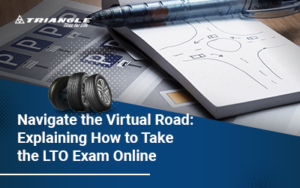Car ownership is a crowning milestone for many, but it takes more than just getting the keys in your hand. As a vehicle owner, you must go through several steps to safeguard your investment and acquire it legally. Among these processes is the Land Transportation Office (LTO) transfer of ownership.
This article guides you through the ins and outs of this procedure, simplifying what might seem like an arduous process involving paperwork with various agencies. Whether it’s your car or your company’s delivery truck, we’ll make the journey as smooth as possible!
What is the LTO Transfer of Ownership?
The LTO transfer of ownership is a legal process that officially changes vehicle ownership from one person or entity to another. It involves submitting documentation and fulfilling LTO’s requirements to ensure a lawful and secure transfer of vehicle rights.
This process ensures legal compliance when selling or buying a car. It validates the ownership change, upholds legal accountability, and safeguards both parties. Besides legal compliance, the process of transferring ownership fosters trust in a way that buyers and sellers can conduct transparent and secure transactions.
LTO Transfer of Ownership Requirements
Here’s a list of the documents you’ll need and where to get them.
1. Notarized deed of sale with assumption of car mortgage
This document formalizes the sale and transfer of ownership. You can obtain a notarized deed of sale from a lawyer or notary public. The assumption of car mortgage indicates the transfer of any existing loan on the vehicle.
2. Chattel mortgage release
A release certificate from the financing institution or bank proves the loan’s settlement. The LTO offers a similar service for the annotation and cancellation of the mortgage at the branch stated on the vehicle’s registration. Be sure to double-check which service you need.
3. Original official receipt (OR) and certificate of registration (CR)
These documents confirm the payment of the motor vehicle user’s charge (MVUC), a tax to help maintain roads and address air pollution from running motors. You can acquire them from the LTO, where the previous owner registered the vehicle.
4. Philippine National Police – Highway Patrol Group (PNP-HPG) clearance
This clearance from the PNP-HPG ensures the vehicle isn’t involved in criminal activity. You can get clearance from any PNP-HPG office or satellite station.
5. Compulsory third-party liability insurance (CTPL)
The CTPL insurance is a mandatory policy that protects you from the liability of causing bodily injury or death to a third party in an accident while using the vehicle. You can apply for this policy online.
6. Secretary’s certificate
This document is only required if the previous owners of the purchased vehicle were a corporation or company. It validates the authorization for the vehicle’s transfer. You can get it from the company’s secretary.
A Step-by-Step Guide to LTO Change of Ownership
Transferring vehicle ownership involves a series of steps to comply with legal requirements. Follow this guide for a hassle-free process of legally and securely transferring vehicle ownership.
1. Visit the original LTO branch
Stop by the specific LTO branch where the vehicle was initially registered to start the process. This office has the sole jurisdiction to issue and approve relevant documents for the transfer of ownership since it contains the records and history of the vehicle.
2. Prepare for inspection
Before transfer, you must undergo a vehicle inspection at an LTO-certified private emission testing center (PETC). The testing center verifies the vehicle’s roadworthiness and adherence to emission standards. Always choose an LTO-certified testing center to ensure up-to-date guidelines and adequate testing.
3. Submit documentation and pay fees
Provide all necessary documents listed in the previous section, as summarized below:
- Notarized deed of sale
- Chattel mortgage release
- Original OR
- CR
- PNP-HPG Clearance
- CTPL
- Secretary’s certificate
- Other documents, as requested
Then, pay the required fees, which typically cover transfer taxes and processing expenses. The LTO transfer of ownership fee in the Philippines typically ranges from ₱530 to ₱680. This covers the actual transfer process but excludes additional expenses for other requirements.
4. Await new documentation
After accomplishing all requirements and steps, you should receive an updated CR and OR indicating the change in ownership. It’s wise to make copies of them and other pertinent documents for safekeeping.
Sealing the Deal: Your Ownership Roadmap
When transferring ownership of cars and other vehicles, diligence and adherence to the process are crucial. The steps—starting from visiting the specific LTO branch up to documentation—promote a legally sound and secure transition. Driving in your newly acquired vehicle will feel all the better when you take steps to protect your investment.
Speaking of investments, quality tires are crucial for a smooth ride. At Triangle Tires, we offer an extensive range of products for various vehicle types at affordable prices. Our tires ensure safety and performance, whether it’s your car, truck, or heavy equipment. Browse our catalog or contact us – let’s ensure your journey is safe and enjoyable.


